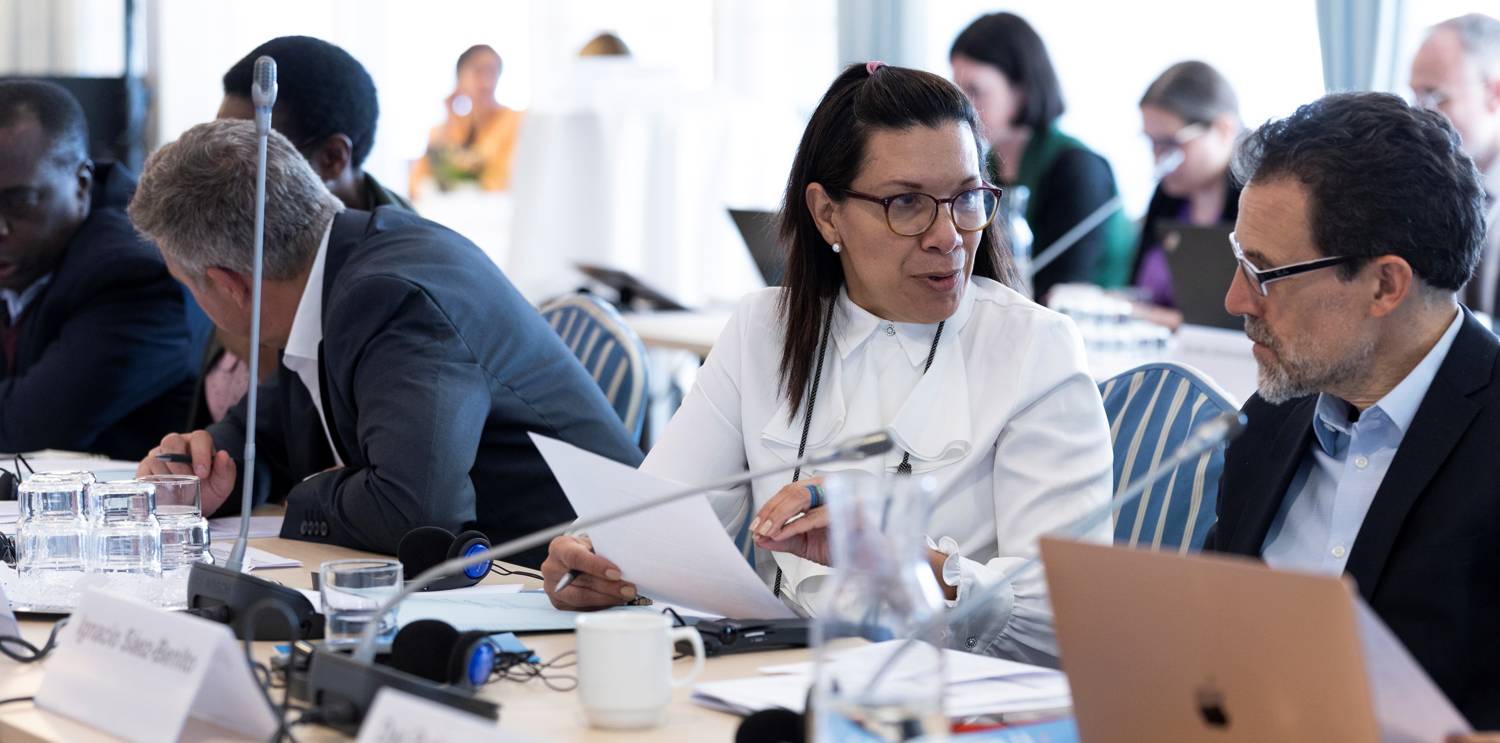
Digital inclusion is paving the way for women and other marginalized groups to participate in peace processes. Through digital platforms, those who are unable to participate in physical meetings, such as women with children, youth or disabled, can get their voices heard. However, digital technologies provide no silver bullet, and mitigating their risks requires careful context analysis and process design.
Digital inclusion offers a way for more lasting peace agreements
Women remain underrepresented in peace processes, and even in cases where they are included, they may have difficulties to attend in-person meetings. Going beyond physical inclusion, digital inclusion offers a way to include a wider variety of people, views and interests in a peace process.
Digital inclusion of women in peace processes was the topic of one of the sessions during the UN High-Level Seminar on Gender and Inclusive Mediation Strategies organised in May 2023. During the session, some 30 peace mediation professionals and practitioners gathered to discuss the opportunities and caveats related to digital inclusion.
Strategic purpose of digital inclusion rather than digi-excitement
The most frequent aim of digital inclusion in peace processes is related to increased legitimacy and political support, as digital tools allow for wider participation, and a larger number and variety of voices to be heard. This, in turn, can increase the ownership of the process. Meetings, consultations and processes using easy and widely available technological platforms such as Zoom, Facebook and WhatsApp make participation easier for those who have often been excluded.
Helena Puig Larrauri, a Senior Digital Technologies Adviser suggests, each process should start by considering the strategic purpose of digital inclusion in peacemaking rather than excitement over new digital tools and the opportunities they provide.
Digital inclusion can contribute strengthening the role of women, youth and marginalized groups through their participation in a peace process. This can have a transforming effect on community relations. Digital inclusion can also help protect those groups and mitigate risks to stakeholders and an ongoing peace process, for example, through data collection aimed at protecting civilians. Such data includes that on gender-based violence and violence against women.
Digital technologies offer various functions for peacemaking and increased inclusion. Their utility can be seen in gathering, analysing and disseminating relevant data. For strategic communications, digital technologies offer tools to amplify and diversify messages. Additionally, they offer platforms for connecting actors and enabling collaboration between them.
Mitigating risks by careful process design
"We must remember that using digital tools to increase inclusion also comes with challenges," says CMI's Head of Women in Peacemaking and Digital Peacemaking, Johanna Poutanen. "Weak information and communications technology infrastructures, high mobile data costs and lack of network access mean that not everyone is able to participate through digital tools. Due to representation bias, unequal access and use of digital tools may lead to false impressions of representation."
Women globally are less likely than men to have access to mobile phones or the internet. Thus, women's participation through online tools remains lower than that of men.
Security concerns also affect participation, as women are more likely than men to experience online violence. In fact, 38 per cent of women globally who use the internet have experienced online violence, and women in public and political roles are at increased risk.
Social media illustrates the opportunities and risks related to digital tools. On one hand, social media remains an important channel for finding new voices, and hearing new and alternative views from a range of stakeholders. Considering the harassment women face online, social media offers a way to see which topics may have led to the silencing of women and for those topics to possibly be awarded extra attention.
However, the ratio of male and female users varies drastically between different social media platforms and between countries. The use of social media data requires analysis and expertise from those using them to avoid misrepresenting views. Indeed, any use of digital tools should be preceded by a careful conflict analysis of the digital landscape.
The risks can be mitigated to ensure realizing the potential digital tools offer in increasing inclusion and fostering participation. Using a hybrid approach, which consists of using the strengths of both digital and conventional forms of inclusion, minimises the risk of exclusion. Through evaluation, appropriate tools and modes of participation can be chosen for each context.
"Educating and training women and women's groups to use digital technology improves their chances for informed participation and contributes to their empowerment within and beyond a peace process," says Torunn L. Tryggestad, Director of the PRIO Centre on Gender, Peace and Security.
The 12 th UN High-Level Seminar on Gender and Inclusive Mediation Strategies was organised in Porvoo, Finland on 9-11 May by CMI – Martti Ahtisaari Peace Foundation, the Peace Research Institute Oslo (PRIO), supported by the United Nations Department of Political and Peacebuilding Affairs (UN DPPA) and the Ministry for Foreign Affairs of Finland.





